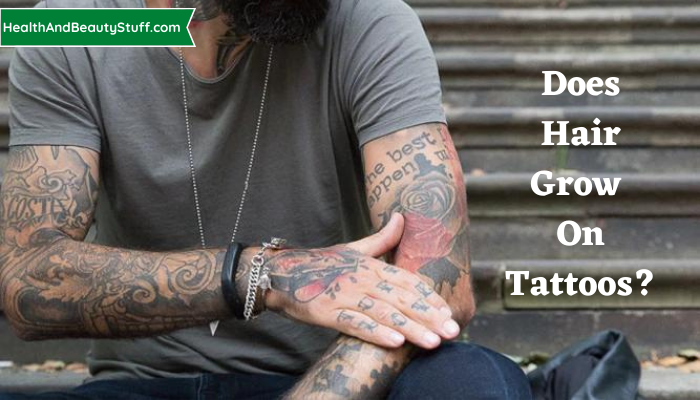In the realm of body art and self-expression, tattoos have become increasingly popular. People often get inked to commemorate significant life events, express individuality, or simply for aesthetic appeal. However, an enduring myth persists: the notion that hair no longer grows on skin that has been tattooed. This question intrigues many, prompting us to investigate the truth behind this misconception. So, does hair grow on tattoos?
The skin is a complex organ comprised of multiple layers, each serving distinct functions. The outermost layer, the epidermis, acts as a protective barrier, while the deeper dermis houses hair follicles, sweat glands, and connective tissues. When an artist applies ink during the tattooing process, it penetrates the epidermis and reaches the dermis, where it gets trapped in the skin’s fibers. The result is a permanent design that can define one’s aesthetic identity. This brings us to the crux of the matter: does this artistic endeavor affect hair growth?
To fully appreciate the implications of tattooing on hair follicles, one must understand how hair growth occurs. Hair follicles reside in the dermis, where they undergo a continuous cycle of growth, regression, and rest. Tattoo ink does not impact the biological mechanisms that generate hair follicles. Consequently, tattooing does not eliminate the capacity for hair to grow in the areas where skin is inked. Therefore, it is essential to dispel the myth that tattoos prevent hair from sprouting.
Yet, the narratives surrounding tattoos and hair growth often stem from anecdotal evidence. Some individuals report changes in hair density or texture in areas that have been tattooed. However, one must approach such claims with scrutiny. Hormonal fluctuations, skin conditions, and even genetics can significantly influence hair growth, often overshadowing the role of tattooing. An individual may observe thinning hair or varying textures post-tattoo, but attributing these changes solely to body art may be misleading.
Beyond the biological perspective, the dermatological implications of tattooing must also be considered. The insertion of ink into the dermis can lead to localized inflammation, which may temporarily alter hair growth patterns. In particular, procedures that create scabs or scars can disrupt the hair follicles nearby, perhaps leading to a reduction in hair growth in those specific regions. However, such effects are generally transient, and once any inflammation subsides and the skin heals, hair growth should normalize.
Interestingly, the impact of tattoos on hair can vary based on placement and technique. For example, tattoos located on the scalp may affect the appearance of existing hair. In contrast, a tattoo on a leg or forearm is unlikely to have a noticeable impact on the underlying hair follicles. Furthermore, tattooing techniques can result in differing levels of dermal penetration, influencing how deeply ink is lodged in the skin. These variables can dictate whether any temporary epiphenomena emerge in terms of hair growth, but do not fundamentally hinder the biological potential for hair production.
Additionally, hair color and thickness may seemingly change in tattooed areas due to the contrast with the ink. Lighter hair against a dark inked background might appear to be sparser than it is, leading to the misperception that tattooing inhibits hair growth. This phenomenon—perceptual rather than physical—often compounds the confusion surrounding the myth. As tattoos become more normalized and utilized as fashion statements, it is crucial to dismantle these misconceptions for a cleaner understanding of body art’s effects.
Should you find yourself contemplating a tattoo, it is prudent to consider the long-term implications for hair and skin health. Consulting with both a tattoo artist and a dermatologist can provide valuable insight into any potential effects related to both hair and skin integrity. This ensures you are well-informed as you express your individuality through body art.
The world of body art is rich with cultural significance and personal stories. While tattoos can evoke powerful emotions, they should not be perceived as detrimental to your natural biology. As society’s perceptions of tattoos evolve, so should our understanding of their implications—both aesthetic and physiological. Debunking these myths serves not just to alleviate concern but to foster a more nuanced dialogue regarding body art.
In closing, the notion that hair does not grow on tattoos is simply unfounded. Tattoos do not affect hair growth capabilities in any lasting manner. The temporary changes that may be observed are contextually tied to healing and biological variability rather than any intrinsic flaw or limitation of tattoos themselves. Discerning the truth leads to informed choices, paving the way for artistic exploration without anxiety. After all, beautiful tattoos can coexist harmoniously with vibrant hair, contributing to a unique tapestry of self-expression.
Ultimately, the next time you consider getting tattooed, remember the facts: your hair follicles remain intact and functional, awaiting the next cycle of growth, irrespective of your latest artistic endeavor. This insight not only debunks a prevailing myth but also celebrates the endless variety of human experiences expressed through body art.

